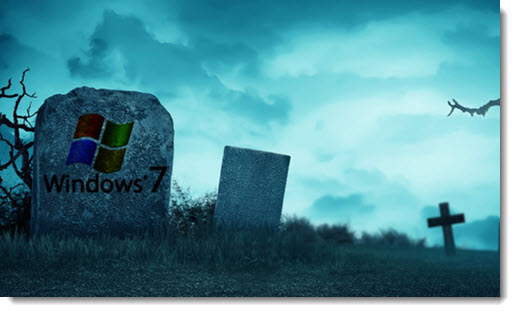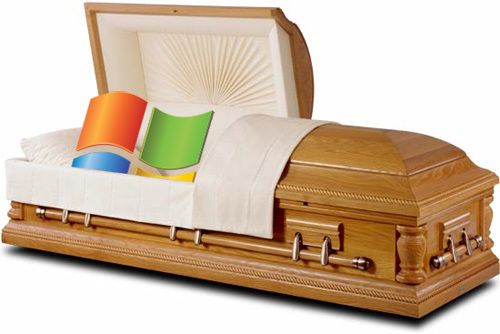
Windows 7 has passed on. It is no more. It has ceased to be. Windows 7 has expired and gone to meet its maker. It’s a stiff. Bereft of life, it rests in peace. It’s off the twig. It’s kicked the bucket, shuffled off its mortal coil, run down the curtain and joined the choir invisible. WINDOWS 7 IS AN EX-OPERATING SYSTEM.
Microsoft will stop supporting Windows 7 on January 14, 2020. That means no new features, no support for new hardware, and most importantly no new security updates.
If you are still running a Windows 7 computer, you have to change computers or upgrade to Windows 10 – full stop, end of story. It is unlikely that there will be a wave of attacks by bad guys on January 15. But it is entirely likely that bad guys will target Windows 7 going forward and take advantage of new Windows 7 hacking exploits when they’re discovered.
Most of you have moved on to Windows 10. Good job! You all win medals for Being Prepared.

You might still see Windows 7 computers at large enterprises. Big companies are special in two ways: (1) they have complex needs, and (2) they have wheelbarrows of money. Microsoft will continue to support enterprise computers with Windows 7 until 2023 if the companies send wheelbarrows of money to Microsoft for Extended Security Updates.

You don’t have a wheelbarrow full of money, and Microsoft won’t take it anyway because you’re not a big company. (To be more precise: the extension is only available to enterprise and education customers with Windows volume licenses or software assurance.)
What to do

Individuals and small businesses should plan to replace Windows 7 computers right away unless you fit into a very narrow exception. You’ll like Windows 10. It still takes a little configuring to get started (this guide is dated but mostly correct), but it has become a mature, stable, secure OS. Well, except for the irritating bits, but on balance moving to Windows 10 is a step forward.
The exception: if you have a Windows 7 computer that has a Core i5 or Core i7 processor (nothing else), and 8Gb or more of memory (no less), then an IT person or computer shop may be able to help you replace the hard drive with a solid-state drive and do a fresh install of Windows 10. The result will be exactly the same as if you took a new computer out of the box. You’ll have to restore your data and install programs, just as if you bought a new computer, but the performance will be wonderful, and you’ll have saved a few hundred dollars.
Personally, I don’t recommend upgrading old Windows 7 computers to Windows 10. You’ll carry forward crud that has accumulated on the hard drive over the years, and chances are that old computers will run Windows 10 poorly on underpowered hardware. For what it’s worth, though, you should know that upgrades from Windows 7 to Windows 10 are free. Microsoft is not charging for upgrades on properly licensed Windows 7 PCs. Microsoft won’t admit that; officially, you are required to buy a Windows 10 license. But it’s now well known that Microsoft still activates Windows 10 immediately, no fuss, for every upgrade.

If you are still using Windows 7, you’re probably irritated. You resent being forced to learn something new, and you’re sure this is a conspiracy by Microsoft to line its pockets at your expense. You’ll seize on excuses – Microsoft Security Essentials will still be updated so you’ll be safe from viruses! Google will continue to update the Windows 7 version of Chrome, so you’ll be safe online!
Sorry, I’ll have no sympathy when you get hacked. Microsoft supported Windows 7 for ten years. It ended support when it said it would, with lots of notice ahead of time. Suck it up. Buy a new computer, buy a Chromebook, spend a fortune on a Mac, give up computers and rely on your phone – I don’t care what you do.
Just get your hands off your Windows 7 computer. It’s dead.
